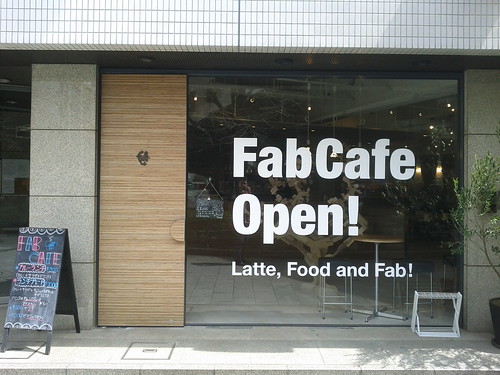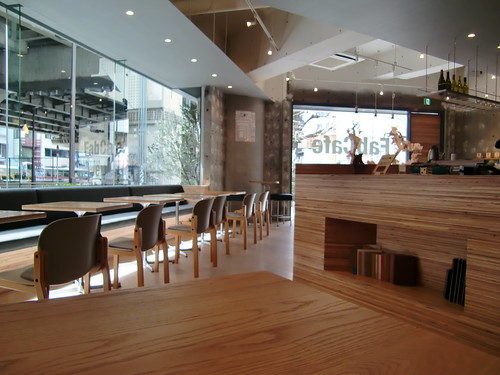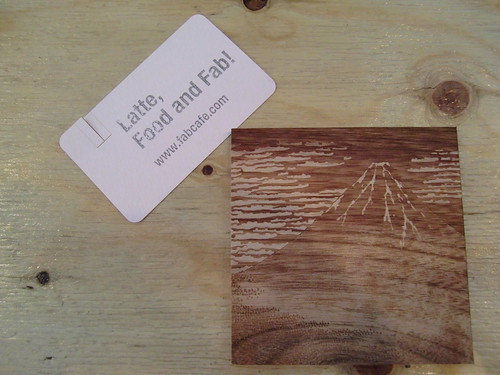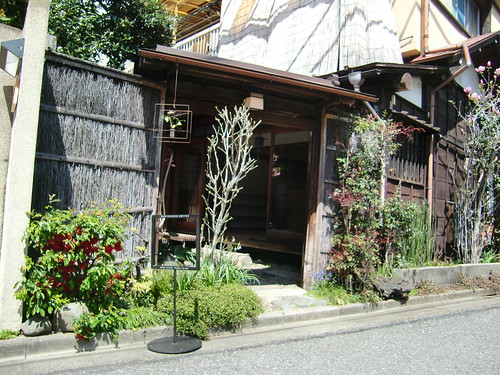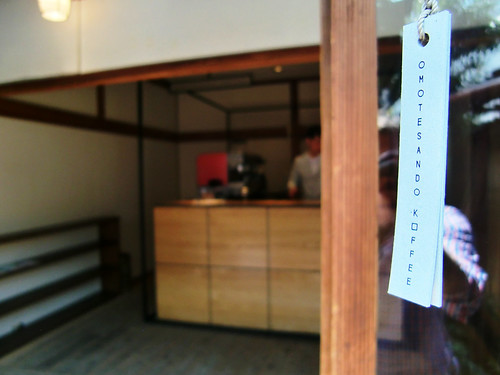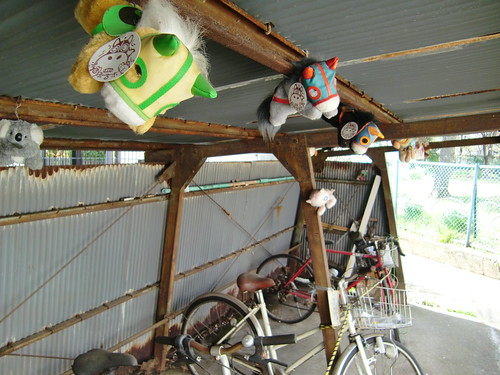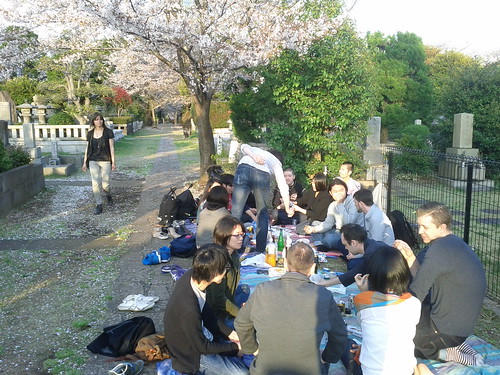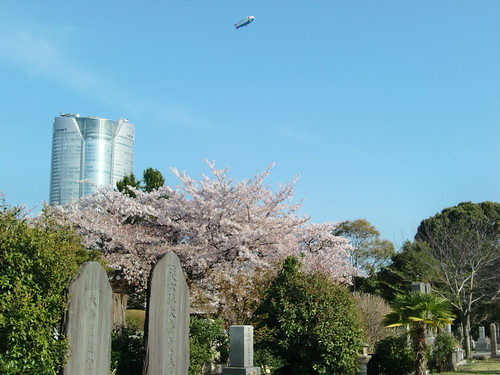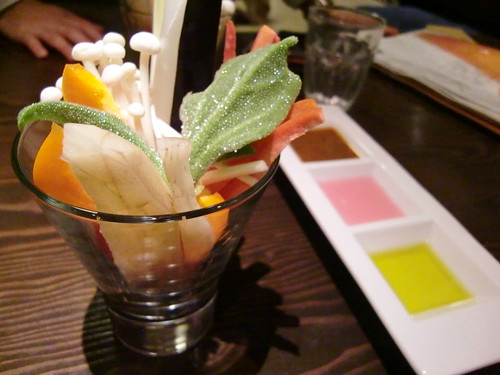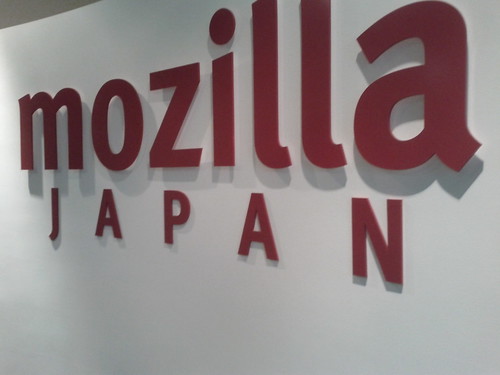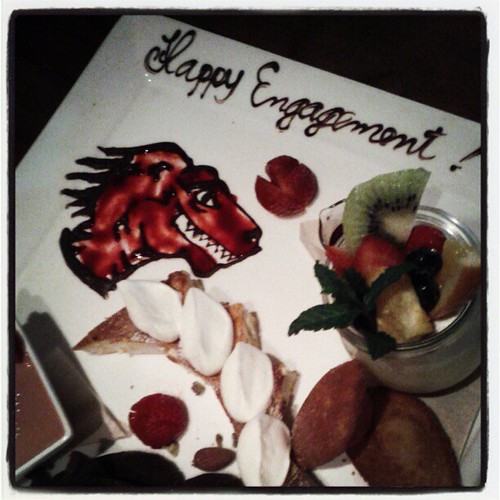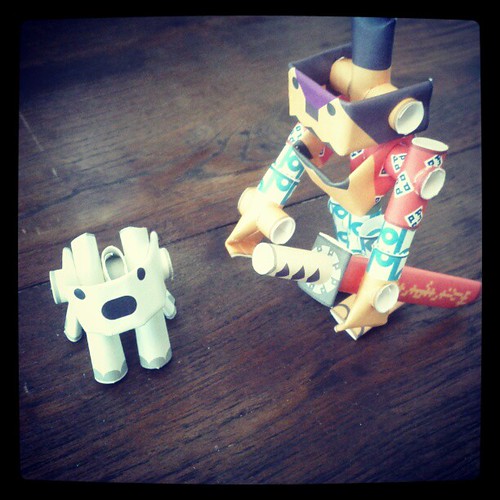Day 12
After the out-and-about day yesterday, we took it slow today. Slept in, got snacks from a lovely bakery on our street, and strolled along a small canal that is densely framed on both sides by cherry trees in full bloom – in fact, they’re already peaking and slowly starting to shed leaves again. It’s a gorgeous sight, and there are many people walking around enjoying them at any given time, and taking lots of photos. Which makes me feel slightly less awkward for doing the same. Since the sun was out and it turned out to be almost an early summer day, we opted for more walking in the guise of a shopping tour (no success on that front, but plenty of sun and fresh air), interrupted by lunch at a small and quite lovely vegetarian place, Annon Cook (2F 2-25-1 Jingumae, Shibuya), and a pick-me-up at Streamer Coffee Company before slowly ambling over to Shimokitazawa again for the afternoon that lead us straight to drinks with yakitori and another veggie dinner. Early night in to finish off the relaxing day. Tomorrow the museums will be open again (most are closed on Mondays) and there’ll be a business meeting in between.
Day 13
The weather is still holding up, so it’s bright and sunny. One of M’s friends is involved in a Fab Café in Tokyo, which turned out to be just around the corner from our apartment. It’s a lovely community space and quite a nice café, too, so we stayed quite a while and had their trademark marshmallow man coffees and had some coasters etched with good ol’ Fuji-san.
I’m sure Hokusai would have approved that his wood print motifs are now cut into pieces of wood directly, by means of mass customization.
A quick swingby meeting at Hario HQ allowed me to meet the good folks behind our favorite coffee equipment maker and marvel at a violin made fully from glass. I forgot to take a photo, but I’m told it fully works, and concerts have been played on it before. Then we’re back off to explore, this time Ueno Park, a lovely large park full of museums and the university of arts. Having underestimated the lure of the cherry blossoms, for which Ueno Park is famous, the place is so packed with visitors that we stay on the outskirts and take a leisurely stroll through Ueno proper instead, before giving the Mori Art Museum over at Roppongi Hills a shot. This part of expat-heavy Roppongi is a bit like a direct transplant from a cyberpunk movie – imagine the headquarters of the Umbrella Corporation or something – a big complex of high rises and underground floors of corporate HQs and shopping malls, all woven together with escalators, a couple of big video screens, and the ever present Starbucks. It’s a bit horrible and a bit fascinating at the same time, yet seems quite popular. Also, it’s the home of the Mori Art Museum, which I’m told is a fantastic museum for modern art and includes a viewing platform that looms over downtown Tokyo. Today though, we’re too late and the museum is closed, so we postpone for another day and recharge in one of the many cafés.
Another swing by Piss Alley for some tonkotsu (pork belly) ramen and gyoza (dumplings), and (at last!) a round of karaoke in Shibuya makes me feel like I’m adapting well.
Day 14
Eventually, the rain caught up. Indoor day! Akihabara, Mori Art Museum, 360 view & bar. Then, soaked from a sudden downpour and underequipped on the umbrella front, Shibuya for a dessert of crepe and cheese cake.
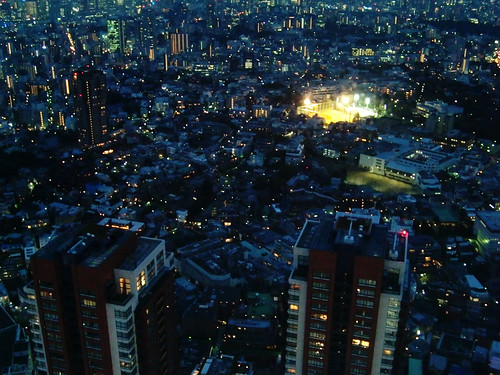
Night view at Tokyo from Mori Art Museum
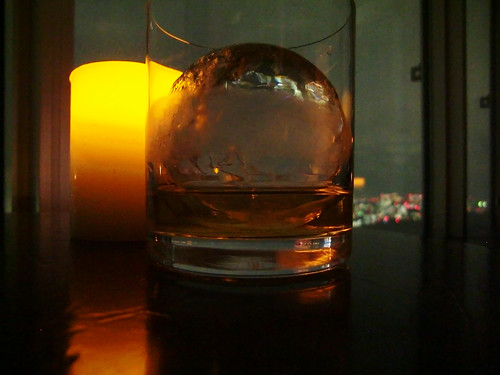
Drinks at the bar in Mori Art Museum
Day 15
The fantastic, cute local bakery in our street, Tolo, keeps giving me presents: For every item I buy, I get a sample gift for free, of the most awesome kind – based on curry, on cheese & bacon, on anything savoury, really. So the sweetness of the cinnamon rolls is nicely balanced out. It’s a really nice gesture, and gets me to try things I wouldn’t necessarily get for breakfast.
Met with Chris, who investigates urban spaces with a focus on actual liveability, like how well can kids play here, or how can commercial and non-commercial spaces co-exist in a city that is so consumption driven? First, he took me to Omotesando Koffee, a fantastic coffee shop which was set up as a temporary space inside an old residential house. Think a tiny traditional building that you enter through a just as tiny traditional garden, only that instead of the living room you encounter a symbolic metal cube that contains the coffee shop proper, barista and all. My words don’t capture the atmosphere, which is both serene and friendly:
Across the alley, there’s an empty lot with tall grass – also a rarity, as it’s big enough so that the owner could try to make a fair bit of money by turning it into, for example, commercial parking lots, which seems quite a common practice.

Lot opposite Omotesando Koffee
We took a walk and Chris showed me what he called the Pearl of Tokyo, Aoyama Toei, a small area of old (post WWII) public housing that is being slowsly phased out. About half of the apartments are already empty and won’t be rented out again, yet the area is anything but abandoned: The residents have turned the space between the houses into beautiful little gardens, and in between the green you can see cats, birds, bumble bees – all of which are otherwise quite rare in the hectic Tokyo urban landscape.
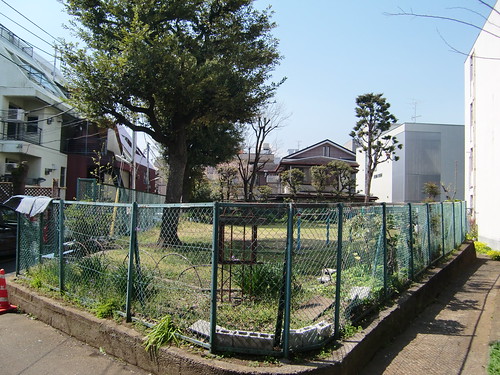
Ironically, the public park is the only part of greenery that’s fenced in.
It’s also a truly non-commercial, residential area, and so it feels like a laid back little island inside the city, even though it’s just a few blocks away from one of the major shopping streets. I find it fascinating that this area, that was built on the cheap and I imagine not exactly a desireable place to live 20 years ago, now has this new life of a completely different sort, which the architects most likely hadn’t planned for. A quick dash back to the coffee shop to pick up Michelle and another shot, the off to a picnic for Hanami, the enjoyment of the cherry blossoms. The good folks of AQ Works & Tokyo Art Beat had invited us along, and so equipped with snacks and drinks we headed to Aoyama Cemetery, where we chatted, ate and drank for a couple of hours between cherry trees and shrines. It’s great to hang out with your tribe in a completely different context, and we felt right at home:
Also, thanks to Chris and Paul I had the chance to get a tiny bit of a better understanding of the nature of wabi-sabi, part philosophy, part design aesthetic. Instead of even trying to give a half thought out definition around embracing flaws and finity, I’ll refer to this quote: “One does not lament for the fallen flower, one loves it.” Dinner with our friend Ryo brought us back to Shinjuku, or rather to Hot Pepper, a restaurant themed around local organic food. While most of the food was quite yummy and everything was incredibly fresh, I’m still not entirely convinced of – but fascinated by – chicken breast with white strawberry sauce.
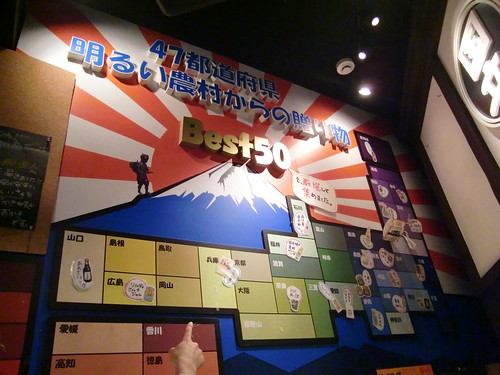
Map of local food sources at Hot Pepper
That said, it’s fantastic to see these locally produced and absolutely fresh goods prepared with so much love, and had we not have to transport the stuff across a whole continent, I’d have stocked up on all the things they had. One more stroll around Shinjuku that ended in some arcade time, and time flew until we just barely caught the last train back to our HQ. Since it was a week day, no Tokyo Metro staffer was there to push us into the subway with white gloves, a practice I’m told is not uncommon for the last trains leaving the city on weekends.
Day 16
Our friend Tam came down from the North-East to join us for a day in Tokyo. Still tired from last night, we resorted to a desperate Starbucks Coffee before going on a nice, long stroll. Kappabashi-dori is a street full of professional restaurant equipment. In Japan, that means a fascinating mix of pots, top notch knives, arcane coffee equipment – and the (in)famous plastic food that is used to display the menu out in front of the shop instead of pure text or photo based menues in the West. No plastic food for us though, but a bag of freshly roasted coffee beans.
Looping back through the older, more traditional neighborhood of Asukasa, and we hop on a boat down the river. Fun fact: The Philippe Starck-designed Asahi Beer company HQ is built to look like a glass of beer, and next to it there’s what was supposed to look like a big golden flame on top. Yet, something went wrong, and now the flame was adapted to lie on its side, looking like some horrible, huge, golden, steaming pile of poo, which is why it’s often referred to as the “golden turd”. The boat ride ended at a gorgeous park that first was the Emperor’s, then a Shogun’s hunting grounds, before being opened to the public for good just after WWII.
Facing the water on one side and a busy office neighborhood on the other, this time of the day it was quite quiet. Like an island of calm in the middle of the city. On the mono rail, which took us on a loop through Tokyo Bay and right into town, where after another cup of drip coffee in another vaguely French-/Euro-themed café we met the lovely Mozilla Japan team. Did you know that Japan has an alternative Firefox logo, Foxkeh, with a more kitten-like, manga style fox. Also, I learned about an Arduino hack that gives you ambient awareness of the data passing through your browsed by type (user-requested, cookie, other, I believe were the categories) by means of either blinkenlights or drips of spirits into a cocktails glass. At dinner, Tetsuya blew our minds, when it turned out he had asked the restaurant to bring us not just any random dessert platter, but instead on with well-wishes for our engagement and a big, chocolate-and-strawberry drawn Mozilla on it. Check this out!
Another night in Japan, another cultural notion: ichi-go ichi-e, a popular Japanese idiom. It is often translated as “one opportunity, one encounter” or “treasure evey meeting, for it will never recur”. Thanks, Tam, for the explanation! It still is somewhat mindblowing how deeply engrained in Japanese culture the ideal of hospitality is, and how much meaning is conveyed in this one expression – so much so that it even transcends the language barrier that I have been hidden behind all this trip. If I can manage to adapt even a shadow of these principles I’ve learned about on this trip, I’d be a better person for it.
When I mentioned this to a friend, he pointed out the closest German equivalent to this: So jung kommen wir nicht mehr zusammen!, roughly translated as we’ll never meet again this young, maybe doesn’t go as deep, as it’s mostly used to enjoy an evening with friends and stay out a little longer.
And on this note, Michelle and I headed home, first to the apartment to pack and catch a few hours of sleep before catching an early flight in the morning.
In fact, I’m writing this on the plane, to be posted when I’m back in Berlin. I’d like to once more thank all the people who made this trip so special for me. First and foremost Michelle, of course, and also Tam, Ryo, Ryohei, Tetsuya, the good folks at the Fab Café and all our hosts. And last but not least the lovely people I had a chance to meet along the way, and our friends who sent us all the lovely notes I’ve mostly not yet gotten to respond to – you rock.
That said, I don’t want to end on a melodramatic note, so I recommend you plan a trip to see the country for yourself, and if you want to get into the mood for it and don’t mind its focus on organized crime, Jake Adelstein‘s book Tokyo Vice is at the same time a primer on Japan, its media and crime scene, written with an international perspective and it’s quite frankly hilarious. Go get it over at Amazon!
